Cinematography
Filmmaking - Cinematography
-
Jonathan Yi Talks About The Canon C300
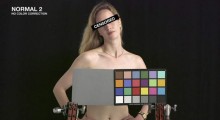
Last week Jonathan Yi posted a video on the web: “Canon EOS C300 = Awesome”. The video, shot with a prototype of the new Canon C300, pokes fun at camera tests, while also demonstrating many of the capabilities of this camera. Though it was originally produced for Canon’s launch event, the video was not posted at that time because, as Jonathan said “Canon, not thrilled with my sense of humor, does not credit or condone this video.” Canon may have underestimated the charm of the video, or the interest in anything related to the C300; to date, the video has […]
-
The ARRI Alexa: Bridging Past and Future
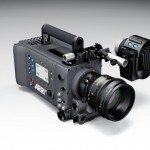
Originally published in the Fall 2010 issue. The time frame needed to produce an independent feature these days can seem longer than the lifespan of its underlying technology. Cheap HDSLRs challenge high-end camcorders that cost 50 times more. Even RED One, whose revolutionary bona fides were golden two years ago, suddenly feels status quo. And lurking around the corner — due at year’s end — is a vanguard of new, inexpensive large-sensor camcorders from all the usual suspects. It’s been said that the geek shall inherit the earth, but this is getting ridiculous. How’s a producer to make sense of […]
-
The Software Camera
We’ve seen several revolutions in the world of camera design over the past ten years; HD video, solid state recording, DSLRs, and large sensor cameras, but one that is often overlooked is the arrival of the software camera. It used to be that when a camera was released its features were set in stone, and only the arrival of a new model – or a very rare recall – saw any changes in the capabilities of the camera. That has changed as the computer-like functionality of video cameras has expanded. As just one example, there were two amazing things about […]
-
Leitner’s Mondo NAB, Part 5: Roundup

Originally posted April 2011. This fifth and last NAB 2011 blog is really about churn. Churn, to my way of thinking, is the degree of agitation and upheaval in the industry at a given point in time, such as this NAB. Apple’s sneak peek of FCP X at the Final Cut Pro Users Group 10th anniversary SuperMeet reminded me that even a decade ago, indie filmmakers were still coming to grips with the desktop revolution. I remember producers transferring MiniDV cassettes of my footage to Betacam for digitizing back to Avid, oblivious to FireWire or FCP 1.0. How professional could […]
-
Leitner’s Mondo NAB, Part 4: 3D
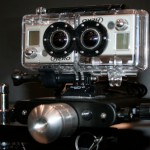
Originally posted April 2011. NAB’s ubiquitous buzzwords this year were 3D and 4K. Or should that be, buzz-acronyms? James Cameron and camera design partner Vince Pace kicked off NAB with a keynote in which they announced founding a new company, Cameron-Pace Group, to spur the industry, particularly television, into rapid adoption of 3D technologies. Cameron, who knows a thing or two about being on top of the world, may have it right again. He and Pace think that TV is fertile soil for 3D, that in a space of five years TV viewers will expect 3D. By then, they contend, […]
-
Leitner’s Mondo NAB, Part 3: SSD, Tapes and Storage
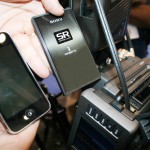
Originally posted April 2011. At back-to-back press conferences prior to the opening of NAB’s show floor, both Panasonic and Sony acknowledged the still-unfolding natural disaster in Japan and asked that our thoughts be with the Japanese people. Sony added that despite critical damage to its media plant in Sendai, supplies of HDCAM-SR tape would return to normal by June. Sony’s Sendai Technology Center (which I’ve visited) practically invented the high-performance tapes necessary to DV and HDV (metal evaporated) and HDCAM-SR (metal particle), and still manufactures a preponderance of them. Having persuaded both film and television industries to adopt HDCAM-SR as […]
-
Leitner’s Mondo NAB, Part 1
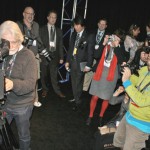
Originally posted April 2011. The big NAB show in Las Vegas opened Monday, and I’ll be filing reports for Filmmaker’s readers at the end of every day through Thursday, when the show floor closes. For those unfamiliar with NAB, it stands for National Association of Broadcasters, a powerful trade association and influential Washington lobby, no bastion of progressive politics. But for filmmakers and indie producers, it also stands for the huge annual April trade show in Vegas, where the latest in cameras, lenses, recorders, lighting, audio, and all manner of production gear are introduced. TV execs, techies, DPs, and crew […]
-
Sony’s New HXC-D70 HD/SD Studio Camera
Studio cameras aren’t something I usually spend much time looking at, but I just sat in on a demo of Sony’s new HXC-D70 HD/SD System Camera, which has some interesting features. The HXC-D70 only started shipping three weeks ago, and Sony considers it their budget 2/3” sensor studio camera; it sells for about $20,000. While it might have many potential audiences, it’s plain that Sony intended this for studios and corporate environments who are currently shooting SD but plan to move to HD. This camera works happily in either mode, will work with older CCU-D50 camera control units, and it […]
-
Getting Started in 3D
I had the good fortune of attending a day-long workshop on 3D production this past weekend. It was notable because we had a chance to actually use the Panasonic AG-3DA1 camcorder and to view the results projected using Panasonic’s new home 3D projector, the PT-AE7000U. In the interests of full disclosure; I have previously written at some length about my suspicion and distrust of the whole 3D thing. I blame it on seeing Jaws 3D in 2D at a drive-in movie at a formative age. To me, 3D seems to be an effect that is useful now and again, but […]
-
Cinematographer Barry Ackroyd Talks The Hurt Locker

Cinematographer Barry Ackroyd has shot almost 50 features with numerous directors, but when it comes time to discuss his work on Kathryn Bigelow’s The Hurt Locker, his collaborations with two other helmers need to be referenced. The first is Ken Loach, the director Ackroyd is most associated with. The Manchester, England-born d.p. has shot many of Loach’s films, including Raining Stones, Ladybird Ladybird, Land and Freedom, the Palme d’Or-winning The Wind That Shakes the Barley, and his upcoming Looking for Eric. In these films he developed an unadorned, naturalistic camera and lighting style that gave them an almost doc-like verisimilitude. […]
